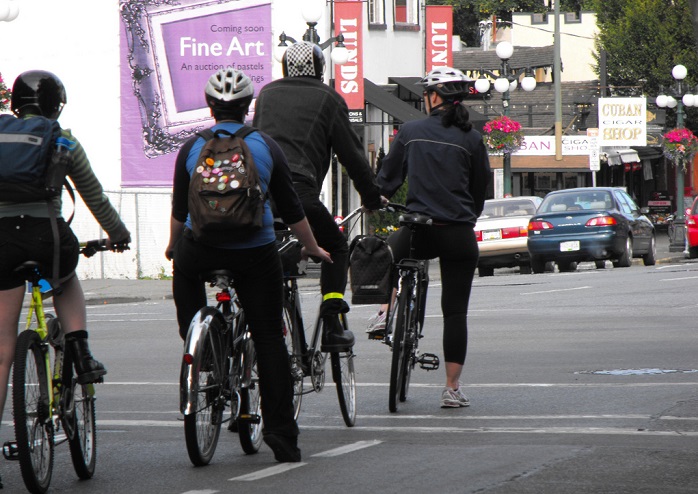Victoria’s “Biketoria” initiative becomes the subject of an undergraduate course for UVic students
When we reported recently on Victoria's Biketoria initiative, it was about a civic plan to ambitiously unfurl eight new bike lanes on downtown routes, polishing up the map of the B.C. capital city for cyclists.


When we reported recently on Victoria’s Biketoria initiative, it was about a civic plan to ambitiously unfurl eight new bike lanes on downtown routes, polishing up the map of the B.C. capital city for cyclists. But like all great, progressive ideas, the idea seems to be more far-reaching than even that.
For students at the post-secondary level in the Vancouver Island city, there’s also an educational component.
At the University of Victoria, Biketoria has become the focal point of an upper-level undergraduate program studying matters of city-building. Officially listed by the university as Geography 491: Advanced Topics in Geography, Biketoria—launched last year as a “vision for creating an expanded cycling network that can accommodate people with a range of ages and abilities,” to use the words of the Victoria Times-Colonist—is the course’s focus, to the point that it may as well be called “Biketoria 101.”
The course is taught at the downtown boardroom of the Capital Region District, a setting intended to underscore the subject matter, becoming part of the experience. As professor Trisalyn Nelson—who also created bikemaps.org, a mapping of cycling safety-related incidents—told the Times-Colonist, “We wanted to give the students a sense that something different was happening to really get them thinking outside the box and feeling like part of the community.”
As cycling advocates have long argued in their push for a greater investment in infrastructure by civic authorities, feeling like part of the community, in transportation terms, means a lot when you’re on a bike.
With a hands-on style, the course includes a number of student projects that explore the systemic nuances of cycling in-depth—and they may have an effect beyond the classroom as Victoria moves forward with Biketoria. “Many of the projects,” Nelson told reporters, “will hopefully be supporting the information needs of the city as they roll out the Biketoria project, so we’ll be looking at a number of different evaluation projects we can do.”
The city itself, she added, will be a participant in the students’ instruction.
